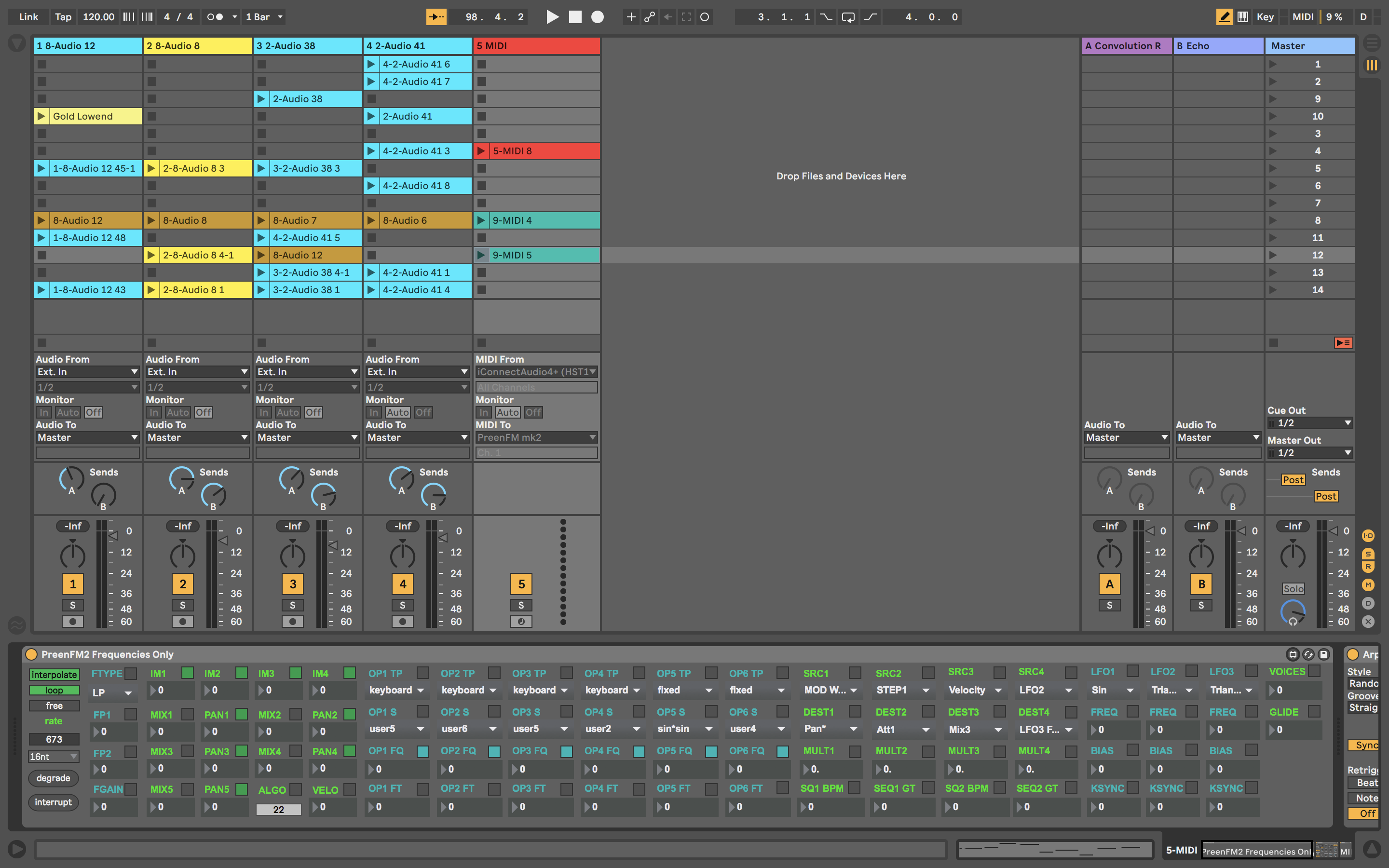Soon I’ll be on my way to Ireland for my second appearance at the Irish Sound, Science and Technology Association (ISSTA) annual conference. This year ISSTA will be held at Ulster University’s Magee campus in Derry, Northern Ireland, November 9th and 10th, 2018. Tickets are still available.
This time around my work is entirely rooted in FM synthesis. Particularly around my explorations of the amazing PreenFM2. I have designed a Max for Live patch that allows me to degrade, morph, and/or scramble sets of parameters on the synth. This is similar to a device I designed for the Yamaha TX81Z. This process creates an algorithmic approach to the sound design.
I have titled this series MODULATOR and recently made an album (unreleased) of material based on the technique. There is a lot to mine here, so I am finding that while I prepare for ISSTA a whole new range of material has emerged. These new compositions developed through a sequence of stochastic, deliberate, and arbitrary processes. Through algorithmic and improvised methodologies textures evolve beyond aesthetic considerations allowing peculiar, harsh, and even grotesque sounds to emerge. Have a listen to this series of clips I recorded while practicing for the upcoming performance:
I named the Max for Live device PreenFM2 Patch Degrader. It morphs NPRN parameter values on on the synth based on a pool of user selected parameters. The values are interpolated over time to new values using a multi-threaded technique that allows many parameters to be changed simultaneously. The interpolation can be turned off so that more glitchy and rhythmic textures are possible.

Because of chance factors in the algorithms the textures and rhythmic content are significantly different every time the device is used. However, some identifying characteristics are maintained, such as how the performer “plays” the algorithm, and the peculiarities of the PreenFM2.

It may come as a surprise that the one area I purposely left out of the patch were the envelopes. The reason for this is that by-and-large the device overrides the function of the envelopes by morphing all the parameter values that the envelopes might touch, like operator frequencies and modulation indexes. I might still add envelopes at some stage, but randomizing envelopes often leads to sounds that are slow to respond, overly quiet, or inaudible. Ultimately I want the generated patches to be playable even when they are chaotic, arbitrarily microtonal, or entirely atonal.
Even though this music might be categorized as algorithmic there are still human decisions and human expressions that go into composing and performing with this tool. How much expression is up to the composer and can range from hardly any to quite a lot. Improvisation is the most natural approach to an instrument that evolves, morphs, glitches, and degrades as you play it. As I practice using the device I find myself immersed in exploring landscapes of sonic textures so surprising that I may as well have been transported to another dimension.
